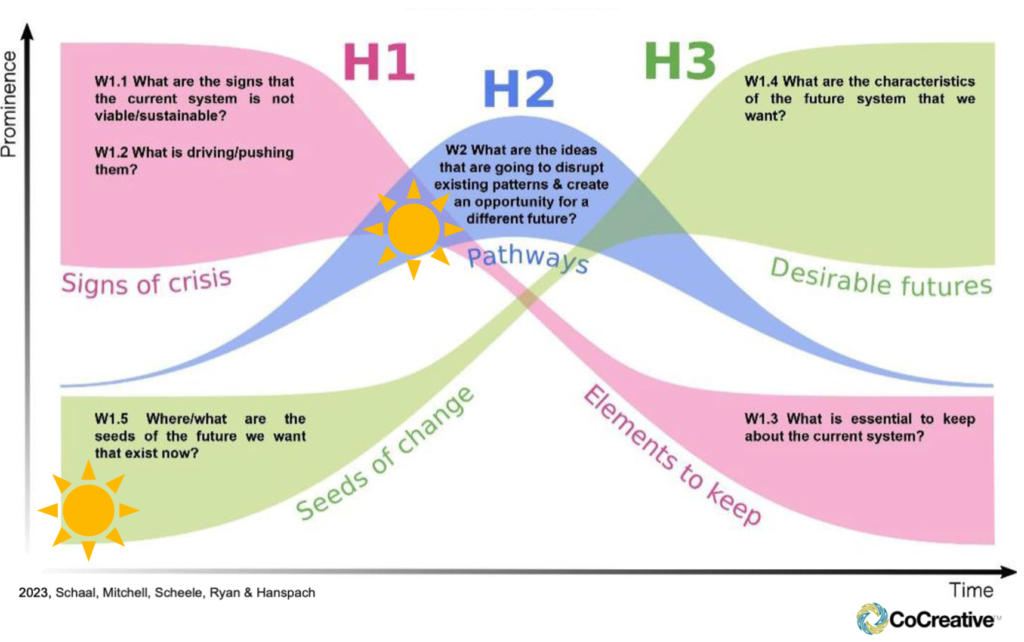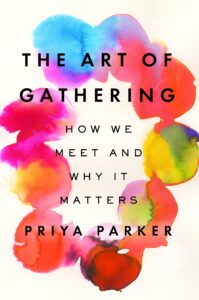This blog is inspired by a Well-Being for All webinar co-hosted by CoCreative and the Academy for Systems Change.
What does the future of our collective well-being look like, and in what ways is it already here? Too often, we focus on problem-solving for our current reality to the neglect of seeing where the world we want is already present. As we seek a better future, it can be life-enhancing to take a step back and elevate all that is already present.
Recently, a group of changemakers from around the world gathered in a virtual setting to explore this emergence. I was honored to co-host this exploration with CoCreative and the Academy for Systems Change as part of their Well-Being for All webinar series. Please join the ongoing conversation!
We begin with the 3 Horizons to tune our senses to perceive the ways in which the seeds of the future we seek are already in our midst.

In Horizon 1, which can be thought of as the present moment through the next year, we ask, Where/what are the seeds of the future we want that exist now? (W1.5) In Horizon 2, which can be seen as the next 3 – 5 years, we ask, What are the ideas that are going to disrupt existing patterns & create an opportunity for a different future. (W2)
Continue reading “Calling Forth the Light”







